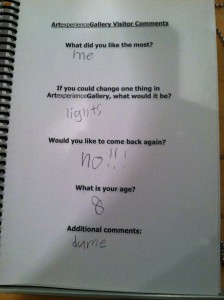This is my first foray into Historic Preservation literature, and I’ll admit I was a little wary and had a few preconceived notions about how engaging this book would be or not be. I was pleasantly surprised and entirely engaged in the reading. The authors do a great job of introducing the history of preservation practices and legislation in the United States while intermixing the theoretical and philosophical background of different schools of preservation.
While studying archaeology both here and in the UK, I often encountered the question of “Why?” Why do we spend long, hard, cold days in the field minutely recording and recovering pieces of the long dead past? Why do we meticulously map and illustrate standing buildings? These are great essential questions of archaeology, history, and preservation – of public history in all forms. This book addresses these questions through the theoretical discussions of how preservation should and has occurred in the United States. The authors pose the question “Does preservation stand in the way of progress?” (p. 12). They answer this question using numerous sources, but my two favorite quotes sum up my feelings on the issue rather nicely. The first is from John Lawrence: “The basic purpose of preservation is not to arrest time, but to mediate sensitively with the forces of change. It is to understand the present as a product of the past and a modifier of the future.” (p. 14). The second, in the authors’ own words, supplements the first quotation and serves to begin answering the essential questions I mentioned earlier. “Our society will have matured when its primary focus shifts from the quantitative to the qualitative – when we recognize the need to preserve our built heritage because it represents who we are as a people.” (p. 15).
How then should we preserve the past? I absolutely loathe the philosophy of Viollet-le-Duc. Rebuilding structures as the ‘should have been’?! How pompous and narcissistic! However, this was certainly the philosophy in the United Kingdom during the Victorian period. It was practically championed by Queen Victoria herself and is exemplified in the current structure of Edinburgh Castle. It was basically redesigned under Queen Victoria’s orders to look more like an ancient fort. The problem is, now everything dates to the Victorian period except two buildings! On the other hand, leaving structures completely untouched is a rather melancholy thought. I am far more a fan of Ruskin and the idea that “The greatest glory of a building is not in its stones, or in its gold. Its glory is in its Age.” (p. 22). However, I believe both philosophies are cautionary tales that should be used as points to start the discussions of individual preservation projects. I also very much enjoyed the inclusion of preservation philosophies of other cultures. I was particularly intrigued by the Japanese philosophy that reflects the cycle of life, death, and renewal. The question for modern preservationists is how can elements of each philosophy serve to preserve this particular structure, in this particular setting?
The evolution of preservation movements in the United States was very interesting. It is easy to see connections between the changing theories in both preservation and history. Both switched from a focus on prominent men or their houses, to thematic research or preservation. In light of the piece we read about the Black Bottom, I appreciated the section “A Reaction Against Urban Renewal”. The authors poignantly point out the relationship these projects have with the communities in which they are implemented: “The past was no longer being ignored, but now was purposefully being destroyed.” (p. 44). The authors point to Jane Jacobs’ book The Death and Life of Great American Cities to further emphasize this point. “Her book was an important catalyst in stirring the public’s recognition that more than just saving some landmark structures, preservation dealt with preserving the very fabric of communities.
As a final thought, I appreciated the list of Boise’s endangered historic sites. I only knew where a few of them were and I am intrigued by those listings and by the bike tours mentioned by Mandy. And as a final, final thought – Does anyone else really dislike modern architecture or is that just me? Straight lines, no embellishment, harsh, cold materials. No thank you.



